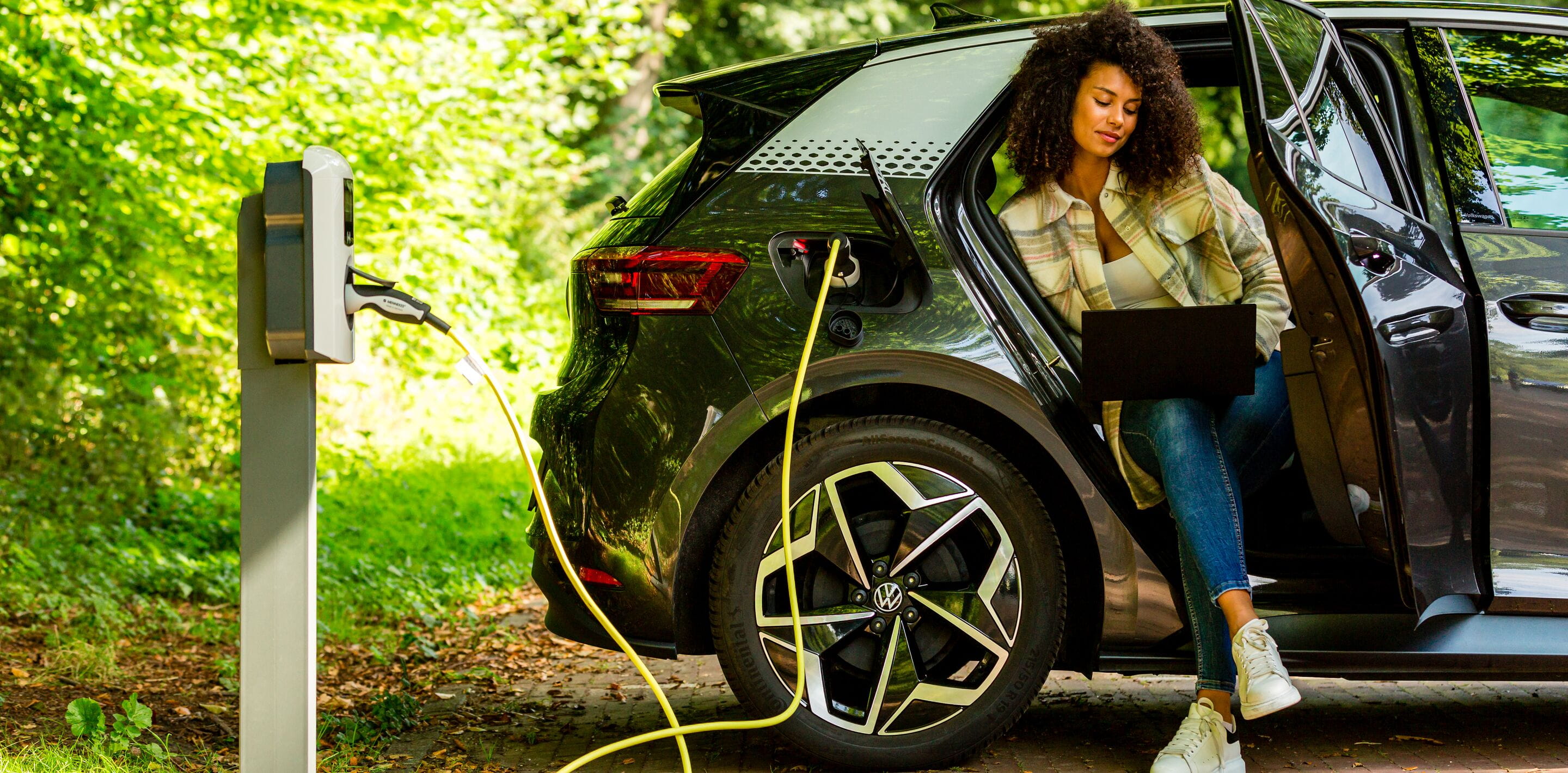
Frequently asked questions about electric vehicles
Questions and answers
Are you lacking answers on questions about electric vehicles? We have gathered the most frequently asked questions, and answered them for you. Read more below, and dive into the fantastic world of electric vehicles.
What is the difference between hybrid and electric?
What is a hybrid car? A hybrid car has both an electric motor and an internal combustion engine. It only uses the electric motor when accelerating and at speeds of up to 25 km/h, so it’s perfect for cities. The combustion engine kicks in for higher speeds. The electric motor is charged every time you brake while driving.What is a PHEV? Plug-in hybrid electric vehicles (PHEVs) have an internal combustion engine and a battery, just like hybrid cars. In addition to charging the battery while you are driving, you mainly charge it at a station at home, at work or on the road. This gives PHEVs a far greater range than parallel hybrids.What is an electric car? A battery electric vehicle (BEV, often simply shortened to EV) runs on a large battery that connects to an electric motor. No petrol, gas or diesel is involved, so there are no carbon emissions. With lower costs, a wider range of new makes and models, and many more charging stations everywhere, it’s easier than ever to go electric.What are the benefits of driving an electric vehicle?
What are the benefits of driving an electric car? Electric cars are better for the environment. They’re also cheaper to fuel, easier to drive and often more fun. With a wide range of new models on the market, you have plenty of choice – and you can rest assured that they’ll most likely have the range needed to get to your destination. Finally, electric cars usually guarantee access to low-emission zones.Is driving electric more sustainable? An electric car generates no CO~2~ emissions while you’re driving it. The EU’s goal of achieving climate neutrality by 2050 means that many countries are already working towards stricter emission rules. Switching to an electric car now puts you ahead of the trend.What's the range on an electric vehicle? The latest generation of electric vehicles come with improved batteries, which results in greater ranges. A precise range number is not easy to say, as it comes down to several factors - including wind, temperature and speed. An electric vehicles drives around 350-450 km on a fully charged battery, depending on the aforementioned. Which brands offer electric vehicles? There’s a wide selection of EVs on the market, with something for everyone. Many leading manufacturers offer at least one fully electric model – Mercedes-Benz, BMW, Porsche, Tesla, Kia, Audi, Renault, Nissan – and there are many more to come!How can I charge an electric vehicle?
What are the different ways to charge an electric vehicle? You can charge your electric car at home, at work, or at a public station on the road.How can I charge my electric vehicle at home? If possible, we recommend getting a home charger. Being able to charge your vehicle at home, gives you security, and ensures that you start your day with a fully charged vehicle. LeasePlan collaborates with many providers of home chargers, and we will be happy to talk to you about your charging needs, and help you find quality systems for a better charging experience. The providers LeasePlan uses, also handle refunding of kWh use in private homes.How can I charge my electric vehicle at work? Companies that invest in charging solutions at work, help secure their employees with electric vehicles best possible conditions. At the same time, they ensure their employees drive economically, as electricity is the cheapest drivetrain. If you are looking for a charging solution at work, LeasePlan can be used as a sparring partner, and help establish contact with the sought provider.How can I charge an electric vehicle on the road? Public charging points are a handy way to charge your electric vehicle or plug-in hybrid on the go. A large charging network has already been established in Denmark, and this keeps getting bigger. Many charging operators are already expanding the network with more chargers, all in order to help secure the public charging infrastructure, and follow the growing number of electric vehicles. If you live in a tower block, you are kindly asked to check your community for charging options. You can charge your electric vehicle through a destination charger (11-22 kW) (a smaller charger in the infrastructure), a quick charger (40 -100 kW) (are often found at petrol stations, pull-ups, and shopping centers) or through a rapid charger (100 + kW) that are often found on highways.Want to know more? We're here to help!
Call us at +45 3673 8300
Call us Monday - Thursday from 8.30 AM - 4.30 PM and Friday from 8.30 AM - 4.00 PM


